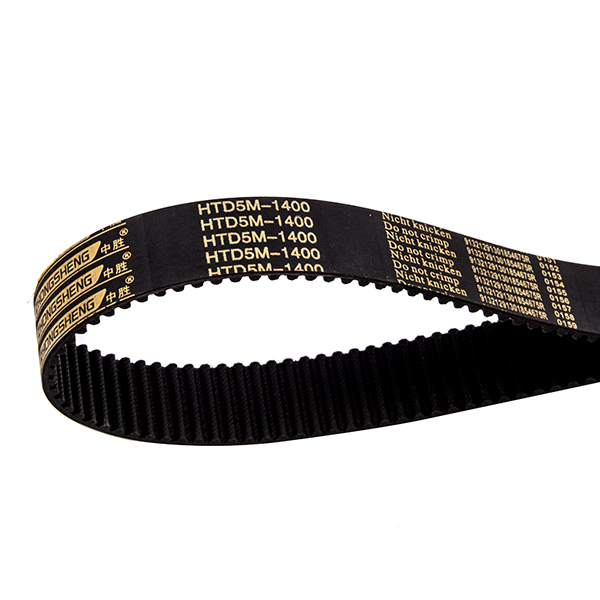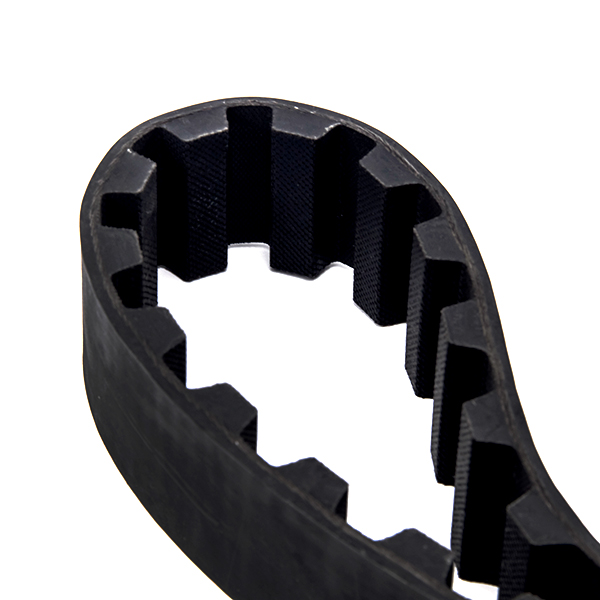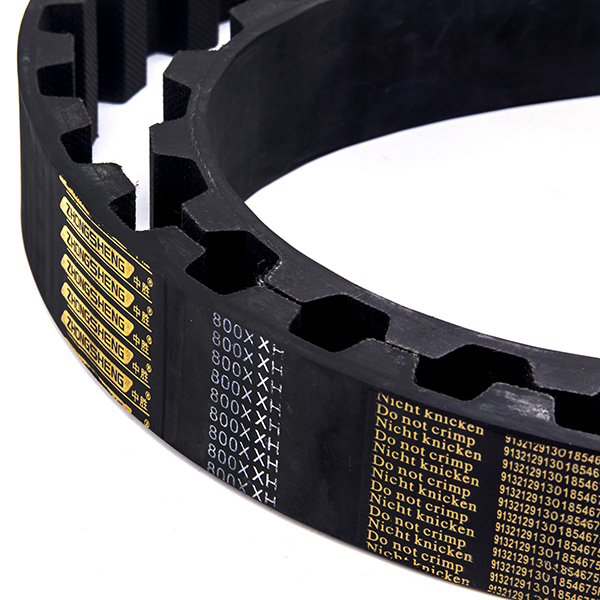Among synchronous belts, trapezoidal teeth and arc teeth are the most common types of synchronous belts, but there are certain differences between the two.
1) The polygonal effect of the
Arc Toothed Rubber Timing Belt is much smaller, because the belt teeth mesh better with the gear teeth, so its transmission accuracy is also higher; 2) From the belt type selection chart in the manual, the low-speed load bearing capacity of the arc-tooth synchronous belt is The capacity is greater; 3) Generally speaking, arc-shaped teeth are more expensive.

The materials of
Rubber Double Sided Timing Belt generally include rubber and polyurethane. Rubber is soft, and the achievable ultimate curvature radius is small, and the deformation is slightly larger under heavy load; polyurethane is hard (some add steel wire), and the achievable ultimate curvature radius is large, and it will deform slightly under heavy loads. The deformation under load is small.
Tooth shape difference: The main factor affecting the accuracy of synchronous belt transmission is the side length of the polygon of the
Trapezoidal Toothed Rubber Timing Belt. In the trapezoidal tooth synchronous belt transmission, the tooth top does not contact the same pulley groove. The belt teeth form a straight edge to produce a polygonal effect, while the arc The tooth tips of the toothed synchronous belt are in contact with the tooth grooves, which partially reduces the length of the polygon formed by the arc-toothed synchronous belt teeth, greatly reducing the polygon effect, making the transmission noise and impact vibration of the
Arc Toothed Rubber Timing Belt less than that of the trapezoidal toothed synchronous belt.


The polygonal effect of
Arc Toothed Rubber Timing Belt is much smaller, because the belt teeth mesh better with the gear teeth, so its transmission accuracy is also higher.
The materials of
Arc Toothed Rubber Timing Belt generally include rubber and polyurethane. Rubber is soft, and the achievable ultimate curvature radius is small, and the deformation is slightly larger under heavy load; polyurethane is hard (some add steel wire), and the achievable ultimate curvature radius is large, and it will deform slightly under heavy loads. The deformation under load is small.
The polygon effect refers to the mechanical principle: every time the sprocket rotates through one tooth, the chain speed changes from large to small, and then from small to large. At the same time, the chain trembles up and down and because the contact part is a polygonal part, The uneven motion of the chain drive caused by the existence of polygons is called the polygon effect of the chain drive.





